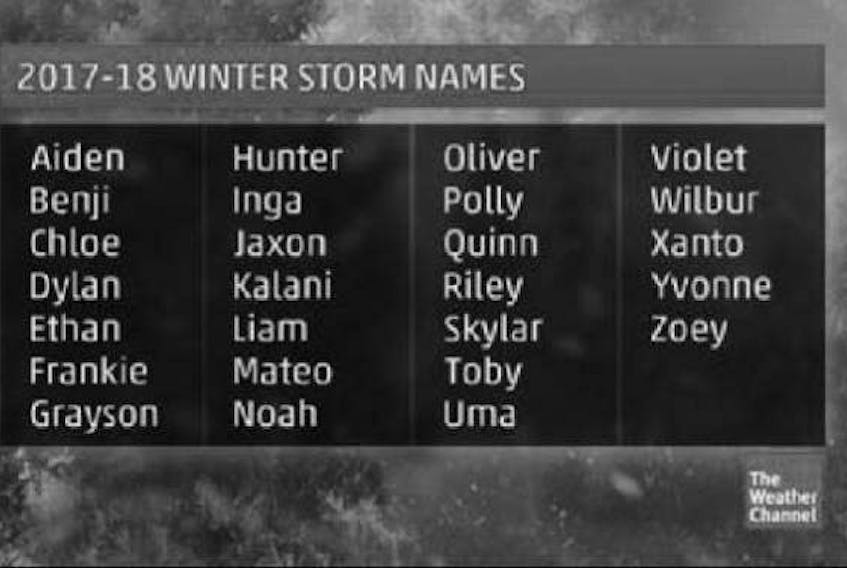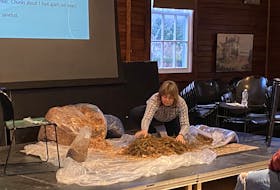I love it when people question things. When I logged in Monday morning, I had an email from Tony, who lives in Shelburne. Tony wanted to know if our rain and snow was coming from winter storm Jaxon.

Yes and no. Last weekend, south of the border, all eyes were on Jaxon. Who is Jaxon, you ask? Jaxon is the 10th named winter storm of the season. Your next question might be, “When did we start naming storms?”
“We” didn’t, but for the 2013-14 winter season, after a couple of years experimenting and refining different models, a team of scientists at the Weather Channel developed and implemented a procedure to evaluate the potential impacts of winter storms.
The National Oceanic and Atmospheric Administration (NOAA), and the National Weather Service (NWS) do not name winter storms and have asked others to refrain from doing so.
The possibility of naming winter storms had been under review for more than 20 years. General consensus is that it is not good science and, importantly, will actually mislead the public. Winter storms are very different from hurricanes.
Related: Meteorologist Cindy Day to keep her eyes on the sky for SaltWire Network
Naming hurricanes makes sense because they are well-defined storms; they follow a path that can be tracked and predicted. Hurricanes have a lifespan of many days and often weeks, they move deliberately, and primarily affect a well-defined area around their core. By contrast, winter storms are often erratic, affecting different areas unevenly. Winter storms often develop, dissipate and re-form as topography changes. You can start out with one centre of low pressure and end up with two, especially here on the East Coast.
The same storm can and often does produce snow and blizzard-like conditions in one corner of a forecast region while wind, rain and fog are the concerns only a few hundred kilometres away.
Some of the most severe winter events can be localized and never get a name. We’re all familiar with the snow squalls that stream on land in the cold wind behind a storm. So Tuesday's nasty weather was compliments of a powerful yet nameless winter storm!
Cindy Day is chief meteorologist for SaltWire Network









